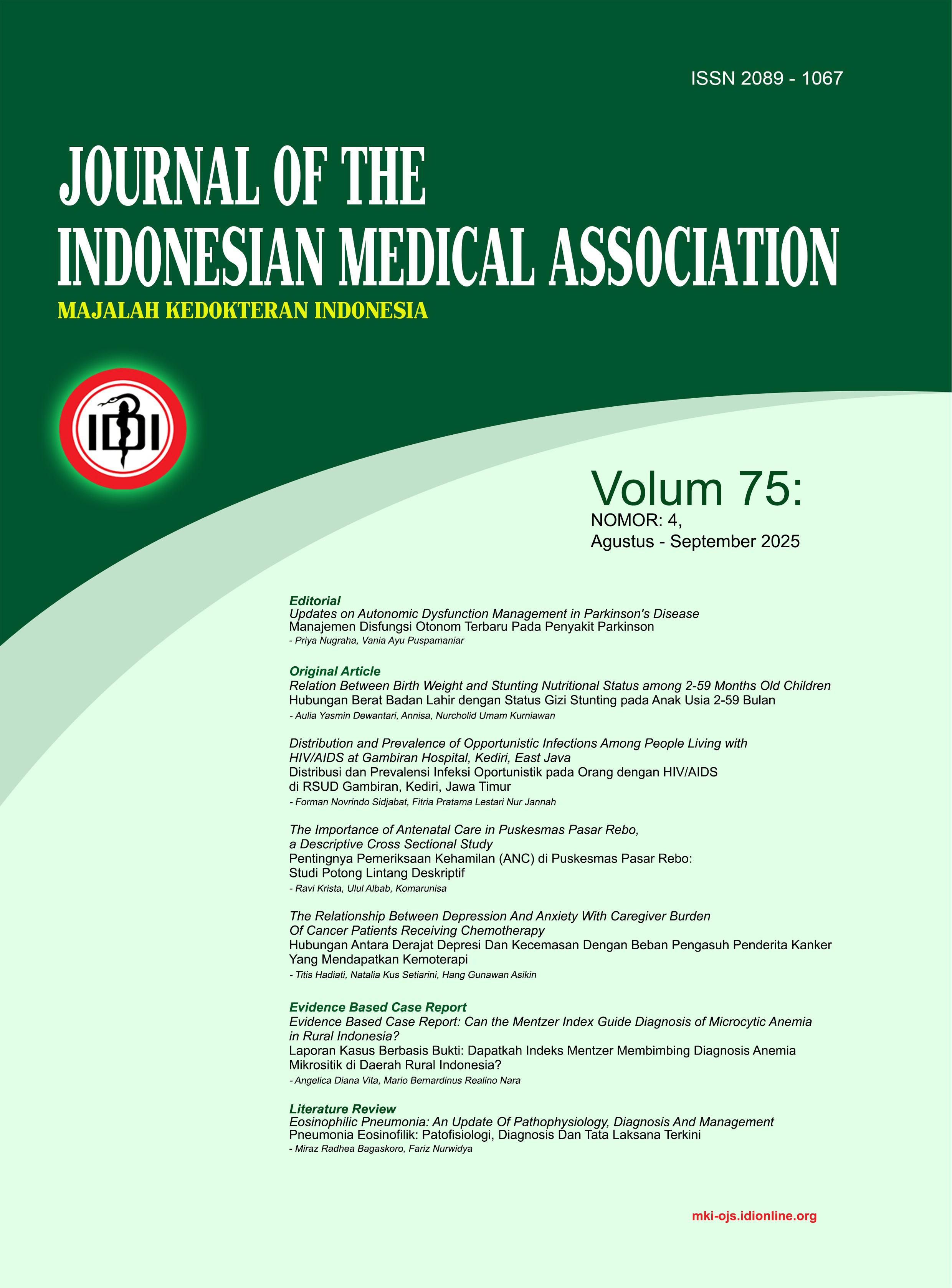Relation Between Birth Weight and Stunting Nutritional Status among 2-59 Months Old Children
Abstract
Introduction: Stunting remains a major global nutritional challenge for children, with a prevalence of 21.3% in 2019. Low birth weight (LBW) has been recognized as one of the risk factors for stunting. Despite various interventions, stunting continues to be a major public health concern because of its long-term impact on child growth and development. This study was conducted to evaluate the association between birth weight and stunting status in children aged 2-59 months, and to describe their characteristics in the working area of Samigaluh 1 Health Center.
Method: This case-control study utilized secondary data obtained from children’ growth monitoring records at the Integrated Healthcare Center and Maternal and Child Health (MCH) handbooks.
Results: Among the 80 subjects, 27 children (67.5%) were stunted at the ages of 2-24 months, and 13 children (32.5%) were stunted at ages 25-59 months. Stunting occurred in 21 boys (52.5%). Bivariate analysis using the Chi-square test revealed a significant relationship between LBW and stunting status (p value = 0.009; OR = 13.000; CI = 1.576-107.228).
Conclusion: The study established a significant association (p less than 0.05) between LBW and stunting status. Children with LBW were at 13-fold increase of stunting than normal birth weight. Stunting was also more prevalent among boys.
Downloads
 Viewer: 219 times
Viewer: 219 times
 PDF downloaded: 133 times
PDF downloaded: 133 times











